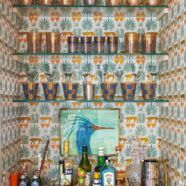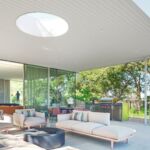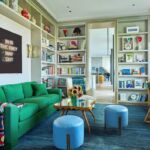Interview
South Writ Large interviewed award-winning photographer Jane Beiles about how she captures the essence of different homes.
Tell us about your line of work—what inspired you to become a photographer?
I was born, raised, and educated in southeastern Michigan before moving to New York City in the early 1990s. I learned to love art as part of my upbringing since my mother was a talented painter and some of my earliest memories are sitting beside her easel as she worked. She founded the art appreciation program at my elementary school and regularly held my hand and honed my young eye at the Detroit Institute of Arts. While her passion and eye passed down, I did not inherit her mechanical skills. I had resigned myself to art appreciation and perhaps art-adjacent pursuits, including extensive coursework in the history of art at the University of Michigan, where I was enrolled in the Ross School of Business. I moved to New York City, happy to be in an executive training program in the fashion and apparel world where I had a great career on the business-side of the fashion/apparel industry. 2002 was the year it all changed. The week our first child was born, my apparel company was sold to a foreign company and I was laid off along with most of my state-side coworkers. I came home from the hospital with no job, but a new baby and my husband’s purchase of a Nikon digital DSLR camera. I had found my calling! I had always wanted to be an artist, but never had a medium. More math and computer versus chemistry-oriented, the field of digital photography opened the pathway to translate my love of art, knowledge of composition, and centuries of paintings on a repeat slideshow in my brain into my own way to make art. I had always been drawn to still life and interiors in paintings (it wasn’t Van Gogh’s famous botanicals or night sky on my dorm room wall, but Bedroom at Arles), so it was a natural to focus on interiors and architectural photography as my specialty.
What do you love about working with people in their homes?
I love the concept of flow when reflecting on what work is one’s calling. When I’m on a photo shoot, all concept of time fades away and I’m immersed in my environment and the process of translating its essence into a two-dimensional image. Most of my work has been for the New York Times where I have contributed photography for over one hundred features, largely of people in their residences. I love meeting the home’s owners—seeing where they have chosen to feather their nest, what objects they cherish, palettes they select, and perhaps meet the creatives they call in to help make their vision an authentic and unique representation of their values. The best homes to photograph are those truly authentic to the singularity of its residents. There’s no formula but there is a distinction between a house and a home. It has nothing to do with what one spends or the “prestige” of a zip code, but rather if the dwelling truly reflects the soul and passions of those who dwell within. I’ve been inspired by restaurateurs with kitchens you’d dream of and cookbook collections—not pristine, but blotched with sauces and drippings, writers who have so many books that they’ve added shelves flanking the back kitchen narrow staircase—and naturalists who live minimally in order to mostly view their beloved outdoors. Homes with soul are those that are authentic, unique, and singular and capturing them is a great source of joy.
What are your main goals when you set up someone’s home for a shoot?
The task of translating the in-person experience of a space for one who will likely never visit is daunting and a challenge I embrace. My goals are to give a broader sense of place to the viewer of the images. That often means pulling back and including not just the home’s façade, but also the surrounding environs. In New England, that might mean stepping way back from the residence to include centuries-old mortar-free hand-laid stone walls and the local flora and fauna. Indoors, I like to not only document the rooms to inspire others for their own spaces, but to highlight the small moments to give the viewer a sense of the quotidian activities. In a home of a passionate gardener, that might include a still life in a potting room of patinaed pots next to a well-used garden trowel and garden gloves tinged with soil. I want my images to be not merely an architectural “blueprint” but evoke the sounds, smells, and hum of the activities within the walls.
Let’s talk about some of your past projects. In 2015, you did a shoot for a couple who moved from Brooklyn to Charleston in an article that was featured in the New York Times. What was special about this project for you?
Photographing Ben and Kate Towill of Basic Projects in Charleston was simply wonderful. When I met them, they were newlyweds and had just finished their own home, a historic renovation in their new South Carolina city. Their enthusiasm was contagious and it was apparent that passion and hard work would serve them well in their new venture. I’ll never forget that when I commented that a door’s swing affected how much of a small bathroom I could fit in my frame, Ben literally pulled out his tools and took the door off the hinges to widen the view. That has never happened before or since. It’s been no surprise to see their firm flourish, expand its scope, and be recognized by Architectural Digest in 2024 as “Emerging Design Stars.”
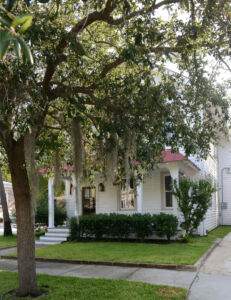
Did you try to juxtapose the minimalism of the interior design with objects like skateboards in this shoot? What effect do you think this has for the viewer?
I wish I could take any credit at all for the styling of this home, but all belongs to Kate Towill. She was a set designer for Wes Anderson and worked on the magical masterpiece Moonrise Kingdom. Kate had that space picture-perfect before I arrived!
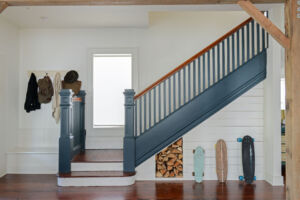
You also photographed this gorgeous house in South Carolina, which has such a magical balance of historical and fun, modern elements. How did you make both aspects of its personality come to life?
This project was the work of Charlotte Barnes and is located in South Carolina, not far from the Georgia state line. Charlotte has had an illustrious career which began with the inimitable Ralph Lauren, for whom she worked in both the US and London. Her ability to transform a space, in this case, what was originally a relatively new-build showhouse into a layered and storied home destined for House Beautiful magazine, speaks to her talent and vision. Vacation, or second homes, can be a challenge to be as soulful as a primary residence since generally most- beloved items reside at the main home. Charlotte worked with the owners to select dozens of special wallcoverings and fabrics to infuse the residence with pattern, color, and character. As she said in the House Beautiful piece, “It’s a new house, but it feels like a place where things have been collected and evolved over time. It’s magical!” (excerpted from HB feature)
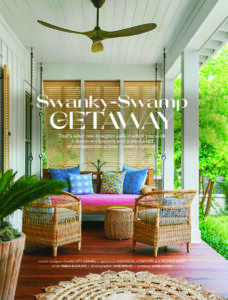
For your shoot in Austin, Texas, did you seek to highlight the gorgeous natural landscape?
The Hill Country topography of Austin is so distinct from any other region of the country, so recording it was of great importance to my images. The architects, StoneFox, were the perfect choice to design a hilltop residence for contemporary art gallerist Lora Reynolds and her family. The natural terrain, and sky-high views down to the city of Austin below, were integral to the home’s design with abundant floor-to-ceiling windows and doors to honor the environment and exist harmoniously with the incredible art collection.
Have you ever had to redo a shoot because the photographs didn’t capture the personality of a house in a particular way? If so, what did you do differently the second time?
Yes, I have returned to the same residence more than once in order to capture a different objective. For example, there have been homes that I captured for an interior designer, architect, or builder who wanted images for the primary goal of documentation that would serve as a client-service tool for potential new clients seeking to be inspired by ideas for their own projects. In a shoot like this, wider views can be most appropriate to visually instruct the floor plan, show the relationships of one room to another, and get a sense of flow. While this type of photo is very helpful for home consumers, it’s not the photo style preferred by some shelter magazines, who seek to be transportive and artistic versus instructive.
What are your main tips and tricks when it comes to staging any home to look welcoming?
One important tip is to recognize that for photography, the two-dimensional characteristic of the medium will flatten the 3-D space. In consideration of that, generally objects need to be removed for the final frame to be balanced. When selecting what stays versus what should be removed, a thoughtful analysis of what will enhance versus detract is in order. For example, bathrooms are characterized by linear elements and hard surfaces. Before releasing the shutter, we might remove a floor scale, products with bold labels or unattractive packaging, or even small objects that add visual clutter instead of value. To soften the atmosphere, we might add in loose botanicals to contrast with the organized grid of the tile backsplash and natural sponges or wooden brushes as evocative props that don’t feel too commercial. A pump soap bottle may be practical for real-life use, but a pastel-hued, hand-milled French chunky soap block could add beauty and even spark an olfactory experience to enhance the visual.
Are there any upcoming projects you’re excited about?
Why yes, thank you for asking! My family and I recently moved to a new home in coastal Connecticut in a fascinating historic district. It is on the same land where the founder of our town lived in seventeenth-century colonial New England. While our home is a 1940 reproduction of the saltbox-style home inspired by what the original dwelling might have looked like (no one really knows that for certain . . . most of our neighborhood was burned to the ground during the Revolutionary War), we have tried to honor the history and even located the images of the house when it was published in the 1940s by House & Garden magazine. We’ve just about finished making it our own and I plan to photograph it this summer.
*All images ©Jane Beiles. All rights reserved, no third party or commercial usage.


